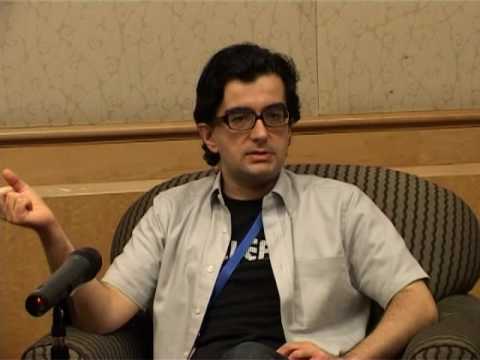HR: Do You Think You’re Doing Enough?

With less than half of employees in Malaysia highly engaged in what they do, there’s an urgent need for human resources (HR) managers to find meaningful incentives strong enough to retain top performers.
According to biennial studies – 2014 Global Workforce Study (GWS 2014) and 2014 Talent Management and Rewards Study (TM&R 2014) – by Towers Watson, just 40% of employees feel sufficiently motivated in their role, with an overall 36% of Malaysians revealing a desire to leave their current company within the next two years – a rise from 29% in 2012.
Even among highly engaged employees, 31% suggested they feel inclined to leave their employers within the next two years, marking only a slight rise from 30% in 2012 – but nevertheless a disquieting figure for senior managers in Malaysia.
So what’s going on – why are a third of employees in Malaysia looking for greener pastures?
Money, money, money
Predictably, the top reason is the elephant-in-the-room many prefer to avoid: salary.
In a 2015 report by the Malay Mail Online, median household income was RM3,626 while in comparison, “median household income for the top 20% is at RM9,796, the middle 40% is at RM4,372 and the bottom 40% is at RM1,852.”

To take one profession as an
example, the national average salary for lecturers in Malaysia sits at RM54,000, while the starting salary for a lecturer in Australia is A$73,000 (RM221,000), and in the UK, lecturers can expect to start with a salary of £33,000 (RM191,000).
In an article by The Star in November last year and according to the Michael Page 2016 South-East Asia Salary and Employment Outlook, it was reported that, “48% of Malaysians changed jobs to increase their salary, while 37% of respondents are expecting a salary increase of 6%–10% in the coming year.”
Of course, HR managers in Malaysia are bound by economic restraints and will invariably have little control over what they can offer.
Nevertheless, graduates with honours degrees and above will no doubt find it an attractive option to go elsewhere – including Malaysia-based multi-national corporations – if they have the opportunity to perform the same role and earn higher salaries in other countries.
Why are employees leaving?
Some other key reasons for employees leaving companies that are within the control of HR managers include learning and development for employees looking to join the firm; and career progression and employee-employer relationships for those looking for reasons to stay with their current employer.
According to the Global Human Capital Trends 2015 report by Deloitte, general findings revealed that organisations are simplifying work processes due to, “employees becoming overwhelmed by increasing organisational complexity, information overload, and a stressful 24/7 work environment.”

From Deloitte’s survey, “74% of all respondents (including those at small companies) rated their work environment as either complex or highly complex,” which implies that a significant number of employees make their way to work feeling less than enthusiastic about the day ahead.
While there has been some progress made by companies in Malaysia, such as the introduction of flexible working hours, remote working, improved training, and career development programmes, there is clearly work still to be done if companies want to attract and retain the best people to meet their business goals and objectives.
A simple thank you. . .
One simple, yet vital component for staff satisfaction is often overlooked: appreciation. The profound effects on morale from even the smallest act carried out by managers can have a huge difference on how employees view their employer, which in turn affects their outlook in terms of how long they plan to remain in their current role.
By neglecting fundamental aspects of management such as communication, feedback, and gestures of appreciation, HR managers and senior executives risk underestimating a powerful tool in holding their top-performing people in place.
In decades past, employees would often bind themselves to a single company, building their career under one employer. Now, we’re in a time where employees hold the power in terms of who they work for and how long, especially in the case of today’s employees who have fewer reservations about moving on if they feel their needs could be best met elsewhere.
A key part of the role of HR leaders is to ensure that business objectives align with the goals of their employees, which is why regular communication is essential in making sure mutual progression, development and growth is kept in line.
If the findings from various reports and insights are to be heeded, HR leaders have a number of challenges to overcome, otherwise businesses in Malaysia might find themselves with a widening talent gap over the coming years. With so many options open to employees, they need to be satisfied that they are truly valued by their employers. Nothing less will do.

Top 10 problems facing HR managers
1. Attracting talent
2. Staff retention
3. Driving employee engagement
4. Managing cost constraints
5. Aligning with business strategy
6. Change management
7. Identifying and developing high-potential employees
8. Maintaining competitive compensation and benefits programmes
9. Succession planning
10. Executing organisational change
(Source: humanresourcesonline.net)
4 key findings on Malaysia’s HR challenges
1. Overall, the percentage of employees in Malaysia who are highly engaged continues to be very low at 40%, consistent with the global average, despite increasing from 36% in 2012.
2. Retention continues to be a key concern for employers in Malaysia. More employees are saying they are likely to leave their organisation within two years; now 36% versus 29% in 2012.
3. The top three engagement drivers are all new for 2014 – specifically, empowerment, goals and objectives, and workload and work life. Image and supervisor are now ranked fourth and fifth as engagement drivers, replacing pay and benefits (fourth and fifth) from 2012, respectively.
4. The top three drivers of attraction and retention for Malaysia have remained the same since 2012. Namely, base pay/salary, job security, and learning and development for attraction; and base pay/salary, career advancement opportunities, and relationship with supervisor/manager for retention.
(Source: towerswatson.com)
5 tips for strategic HR management
1. Proactively seek opportunities for change
HR has a reputation for being the part of the business that hires and fires, as well as being the first port of call for employees who have grievances to air.
Rather than being reactive, HR professionals need to be proactive. Take the time to fully know the business model, and learn from others where they have better practices and procedures in place.
Develop ideas and standards – look to find gaps where improvements can be made to the organisation. Becoming a force for change will flip the perception of HR from being an administrative entity and occasional mediator to being seen as the centre point of change, ideas, and innovation.
2. Match the right people to the right roles
Hiring processes can be a major stumbling block for some companies – assuming proper processes exist in the first place.
Strategic HR management ensures subjective impressions never overshadow objective validation.
Furthermore, as well as matching the right people to the right role, it’s vital to look at the bigger picture of the organisation’s overall vision in order to get a sense of whether new employees are likely to be the kind of high-performing stars you’ll need for the future as well as in the short term.
3. Resolve conflicts emphatically – don’t leave them hanging
It’s no secret that HR professionals have a million and one things to be getting on with: the last thing they need is internal conflicts messing up their schedule. However, problems that are poorly resolved or, worse, ignored altogether, will only fester and grow into bigger problems as time rolls on.
Understanding a situation fully and taking proper steps to resolve conflict will result in a lot of time saved, and by being able to create a new direction from the resolution, will renew a sense of purpose in moving forward for all concerned.
4. Know your priorities
Juggling so many tasks on the to-do list might seem productive, but as research has established, multitasking is actually unproductive, as we lose the kind of focus required to get each job done well.
In a time of obsession over productivity and speed, it’s easy to fall prey to distractions and lose sight of the important things that need taking care of. Clarity and focus are key to getting things done.
Knowing and setting your priorities will help to facilitate genuine progress that will help your organisation enormously.
5. Guide communication and culture
What are the issues holding your organisation back? Why do they exist? What can be done to solve them? Is the organisation’s culture truly reflecting the core values of the company?
It isn’t difficult for leaders to dismiss these questions, or spin some excuses that either put off any required action or flat-out deny the need for it.
A vital part played by any HR professional worth their salt is to guide communication in order to make sure these questions are regularly asked and an honest look is taken at the reality of the organisation’s fortunes.
Communication and culture are two important pillars of any business and should they collapse, it will only serve to the detriment of the business and its goals.
Insights into effective HR
“You can have the best strategy and the best building in the world, but if you don’t have the hearts and minds of the people who work with you, none of it comes to life.” – Renee West
“You will have to manage around the weaknesses of each and every employee. But if, with one particular employee, you find yourself spending most of your time managing around weaknesses, then know that you have made a casting error. At this point, it is time to fix the casting error and to stop trying to fix the person.” – Marcus Buckingham
“People will change when they see that the change will help them reach their goals. If the CHRO sees that the HR transformation that others desire will help the CHRO reach his or her goals, then there will be more support. Absent this reasoning, the CHRO may go through the motions, but the transformation will not be sincere or lasting.” – Dave Ulrich
“Many people go through their whole lives having no real sense of what their talents may be, or if they have any to speak of. Human resources are like natural resources; they’re often buried deep. You have to go looking for them, they’re not just lying around on the surface. You have to create the circumstances where they show themselves.” – Ken Robinson
“We can’t admit that we need to change – either because we’re unaware that a change is desirable, or, more likely, we’re aware but have reasoned our way into elaborate excuses that deny our need for change.” – Marshall Goldsmith
Sandy is a freelance writer for Leaderonomics and The Star. He believes that while HR leaders in Malaysia face great challenges, they’re not insurmountable, and that communication is the key to solving many of the existing issues. To connect with Sandy you can follow him @RealSClarke on Twitter.
Functional
Tags: HR






